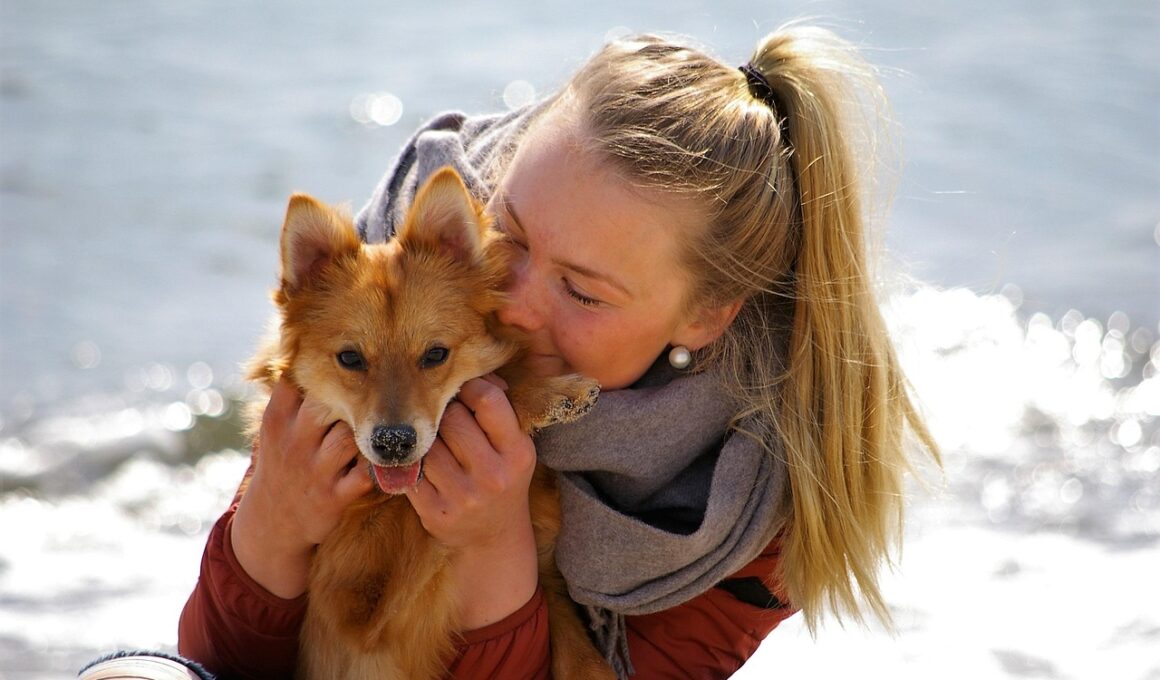How to Housebreak a Dog in an Apartment Setting
Housebreaking your dog in an apartment requires careful planning and an understanding of your pet’s needs. First and foremost, establish a consistent schedule for taking your dog outside, as consistency is key. Dogs thrive on routine, so designate specific times throughout the day for bathroom breaks. Use commands like “go potty” to reinforce desired behavior. When your dog eliminates outdoors, reward them with praise or treats, which helps them associate going outside with positive reinforcement. Keep a close eye on your pet’s behavior while indoors, as signs like sniffing or circling often indicate the need to go out. If you’re unable to take your dog out immediately, utilize pee pads as a temporary solution. Place them in a specific area of your home to create a designated spot for your dog to relieve themselves. Clean any accidents thoroughly, as lingering odors may encourage your dog to eliminate in the same spot. Lastly, be patient and understanding throughout the process; housebreaking takes time, and each dog learns at a different pace.
Once you’ve established a routine, consider utilizing training aids that can assist in the housebreaking process. For example, you might want to use crate training to provide your dog with a safe, comfortable space while you’re not actively watching them. Dogs naturally avoid soiling their sleeping area, making a crate an effective tool for housebreaking. Select a crate that is appropriately sized—large enough for your dog to stand and turn around—but not so large that they will feel comfortable soiling one side. Gradually introduce the crate to your dog by allowing them to explore it while offering treats and praise when they enter willingly. Begin using the crate for short periods, increasing the time as your dog becomes more comfortable. It’s crucial to never use the crate as a form of punishment, as this can create negative associations. Always monitor your dog for signs indicating they need to go outside, and promptly take them out if they show any signs of discomfort. Your positive reinforcement will aid in reinforcing good habits during this process.
Identifying Signs of Needs
Another essential aspect of housebreaking is recognizing the signs that your dog needs to relieve themselves. Understanding your dog’s body language and vocalizations can greatly assist in this process. Common signs include circling, whining, sniffing excessively, or rushing toward the door. Whenever you notice these behaviors, immediately take your dog outside to their designated bathroom spot. It’s also beneficial to be alert during playtime or after meals, as these are periods when dogs are more likely to need to go. Engaging your dog in a brief play session outdoors can also facilitate elimination, as physical activity often stimulates their bathroom needs. Additionally, consider keeping a journal to track your dog’s bathroom habits, noting the times they go out and when they eliminate. This log can help you identify patterns, allowing you to anticipate when bathroom breaks are necessary. Encourage consistency by taking note of these behaviors, reinforcing when they occur outside and addressing any accidents indoors calmly and without scolding. This positive method will encourage better habits.
For dog owners living in apartments, it’s important to adapt housebreaking strategies for your environment. One helpful method is to designate specific spots within your building or nearby for bathroom breaks. Familiarizing your dog with these locations aids in creating a comfortable association with relieving themselves in public areas. Take the time to explore various spots and find one that is quiet and low-stress for your pet. When bringing your dog outside, try to maintain a calm demeanor and keep the leash loose to prevent anxiety. If your dog becomes overwhelmed, you may need to choose quieter times for bathroom breaks, such as early mornings or late evenings. Equipping yourself with waste bags to clean up after your dog is essential for maintaining good relationships with neighbors and keeping the environment pleasant. Remember to reward your dog after they relieve themselves in appropriate places, whether inside or outside. This reinforces good behavior and builds positive experiences around potty breaks. Compensating for limited access also involves adjusting your approach to rewarding and training your dog effectively.
Dealing with Indoor Accidents
Accidents are a common challenge during the housebreaking process, and how you handle them matters greatly. If your dog has an accident indoors, it’s important to stay calm and avoid punishing them, as this can increase fear and anxiety around bathroom habits. Instead, clean the affected area thoroughly using an enzymatic cleaner to eliminate odors that might attract your dog back to that spot again. Recognizing that accidents are a part of training, focus on developing a plan to prevent them in the future. To minimize indoor accidents, consider the size of your apartment and how quickly you can react to your dog’s needs. Implementing a consistent regimen with more frequent outdoor breaks can significantly reduce accidents. If accidents still occur, revisit your schedule and remain flexible in your approach. It might mean adjusting the timing of bathroom breaks based on your dog’s habits and needs. Be sure to communicate with everyone in your household to ensure that everyone is on the same page. This team approach is essential for success during the housebreaking journey.
Socialization is another crucial element to consider while housebreaking a dog in an apartment setting. Meeting other dogs and experiencing various environments can reduce anxiety and enhance your pet’s ability to adapt to new situations. Begin socializing your dog early in the housebreaking process, introducing them to other animals, people, and different locations gradually. Keep these interactions positive and rewarding, so your dog associates new experiences with fun and excitement. Seek out local dog-friendly parks or pet-friendly events; these can be great places for socialization and bathroom breaks. Positive interactions encourage your dog to feel more at ease during outdoor activities, which in turn can assist with housebreaking. Another aspect of socialization is helping your dog feel comfortable around noise and people through gradual exposure. Start with quiet situations first, slowly introducing them to busier environments. This preparation can ease stress and make bouts outside more manageable. Continuous exposure will help your dog become confident in various situations while still mastering the consistency needed for effective housebreaking routines.
Patience and Consistency
Ultimately, staying patient and consistent is vital for successfully housebreaking any dog, especially in an apartment setting. Each dog develops their skills at their own pace, making understanding and kindness key components of the training process. Celebrate every small victory, whether it’s successfully going outside or demonstrating good behavior inside. Positive reinforcement should always be your go-to training method, and it builds trust between you and your dog. Instead of focusing solely on the occasional accident, emphasize successful outdoor toilet trips, reinforcing to your dog that this is the desired behavior. Consistency also extends beyond just a routine; it’s about having a consistent approach across different family members. All caregivers should follow the same training methods, commands, and schedules to prevent confusion for your dog. Practice makes perfect, and despite some challenges, maintaining an encouraging environment fosters adaptability in your pet. Lastly, if you encounter difficulties in the housebreaking journey, do not hesitate to ask for advice from a professional trainer or veterinarian who can assist with any specific concerns you may have. Their expertise can further aid in achieving your goals.
Housebreaking a dog in an apartment setting requires dedication and a thoughtful approach. With the right strategies, even the most obstinate pups can learn where and when to do their business. Remember, the journey of training is continuous, and every dog is an individual; understanding their unique needs will greatly benefit the process. Emphasizing positive reinforcement, patience, and consistency will create a nurturing atmosphere in which your dog can thrive. Ensuring that you stay tuned to your dog’s cues will help refine your approach as you both learn together. If ever in doubt, educational resources, online communities, and training sessions offer valuable insights. Engaging in open communication with others who have experience can provide tips and support. The more informed you are, the better equipped you will be to successfully navigate housebreaking challenges. When implemented correctly, the strategies outlined in this guide will help you foster desirable behaviors, creating a harmonious living environment in your apartment. Your commitment to your dog’s well-being will shine through, rewarding both of you with a sense of achievement and companionship for years to come.


